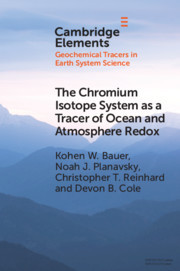Description
The Chromium Isotope System as a Tracer of Ocean and Atmosphere Redox
Elements in Geochemical Tracers in Earth System Science Series
Authors: Bauer Kohen W., Planavsky Noah J., Reinhard Christopher T., Cole Devon B.
We introduce chromium isotopes as a tool to track earth's long-term oxygenation and track deoxygenation during past warming events.
Language: English
Subject for The Chromium Isotope System as a Tracer of Ocean and...:
Approximative price 22.46 €
In Print (Delivery period: 14 days).
Add to cart
Publication date: 02-2021
Support: Print on demand
Support: Print on demand
Description
/li>Contents
/li>
The stable chromium (Cr) isotope system has emerged over the past decade as a new tool to track changes in the amount of oxygen in earth's ocean-atmosphere system. Much of the initial foundation for using Cr isotopes (?53Cr) as a paleoredox proxy has required recent revision. However, the basic idea behind using Cr isotopes as redox tracers is straightforward?the largest isotope fractionations are redox-dependent and occur during partial reduction of Cr(VI). As such, Cr isotopic signatures can provide novel insights into Cr redox cycling in both marine and terrestrial settings. Critically, the Cr isotope system?unlike many other trace metal proxies?can respond to short-term redox perturbations (e.g., on timescales characteristic of Pleistocene glacial-interglacial cycles). The Cr isotope system can also be used to probe the earth's long-term atmospheric oxygenation, pointing towards low but likely dynamic oxygen levels for the majority of Earth's history.
1. Introduction; 2. Basics of Cr speciation and isotope fractionations; 3. A global Cr isotope mass balance?; 4. Seawater Cr isotope values; 5. The sedimentary Cr isotope record; 6. Summary and future directions.
© 2024 LAVOISIER S.A.S.




